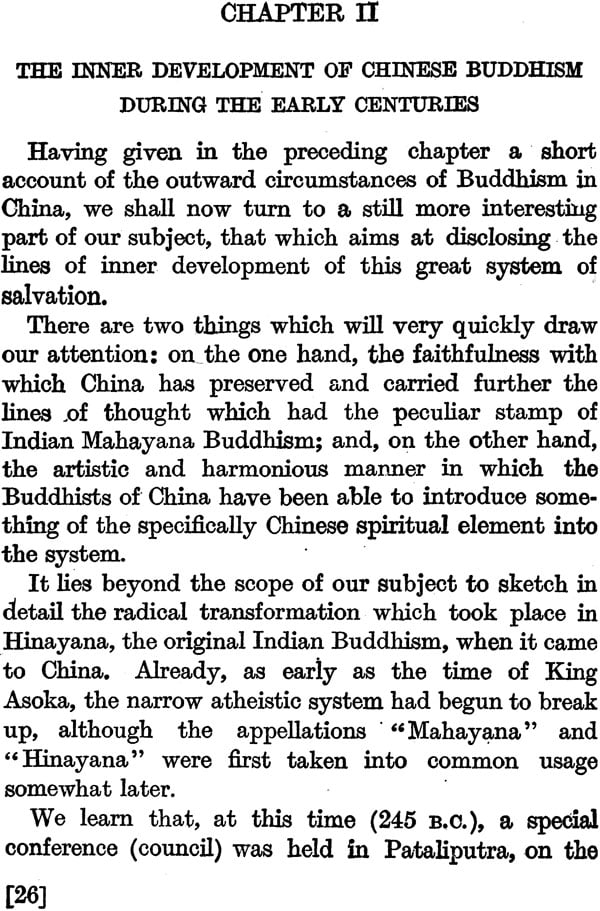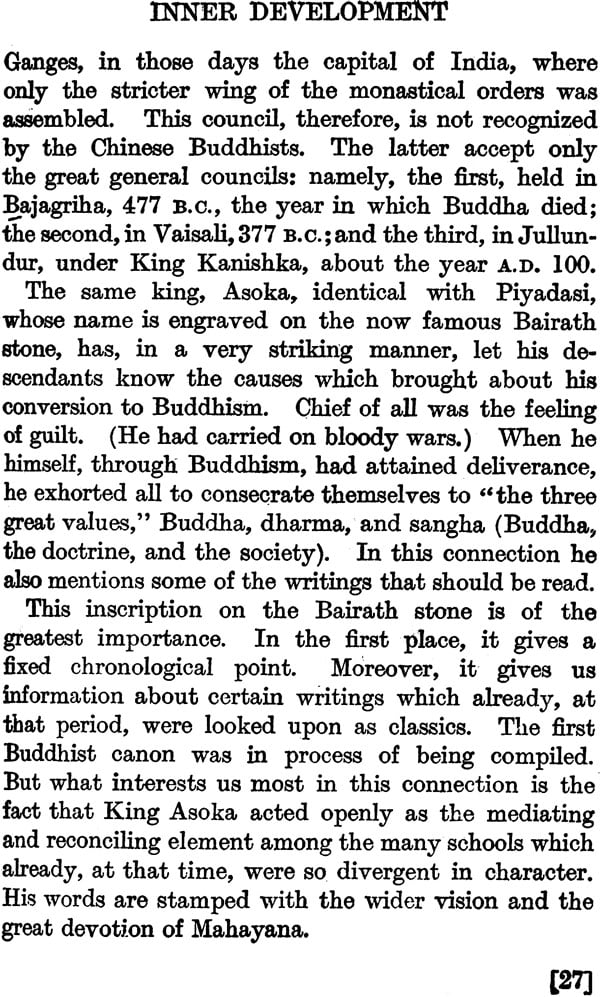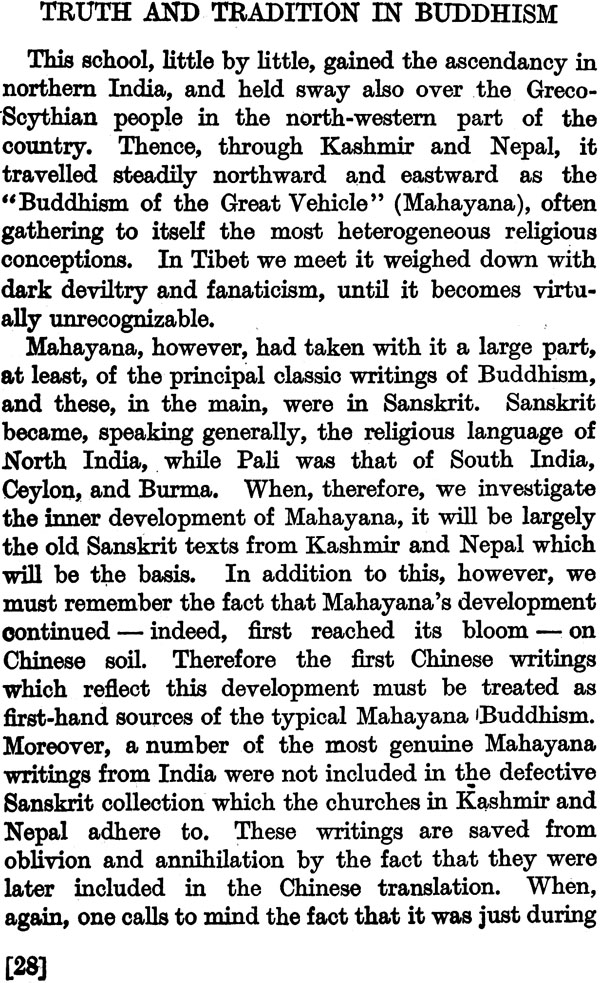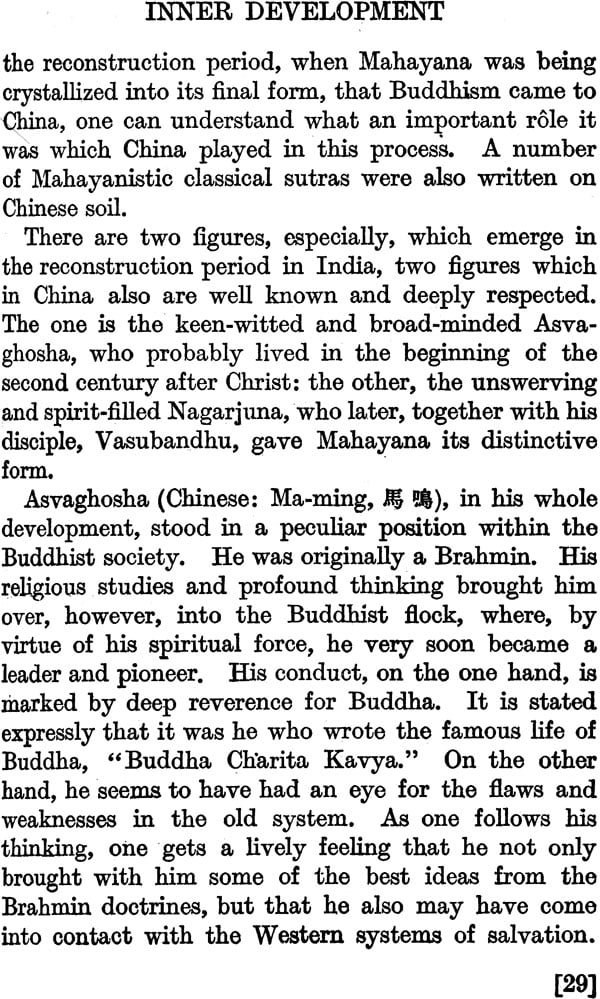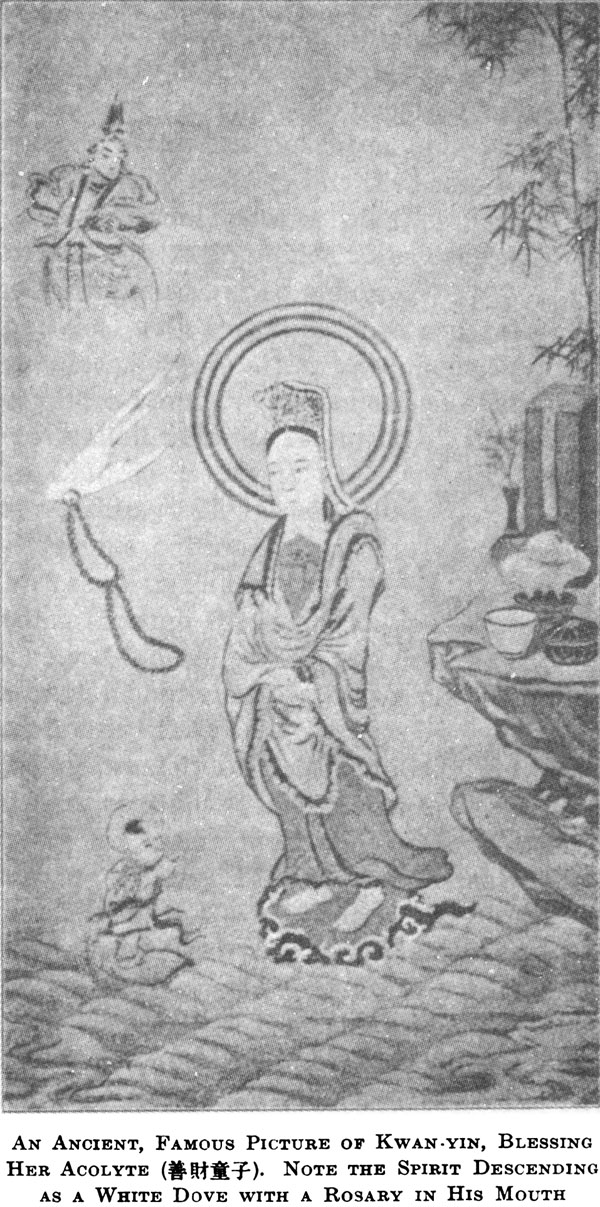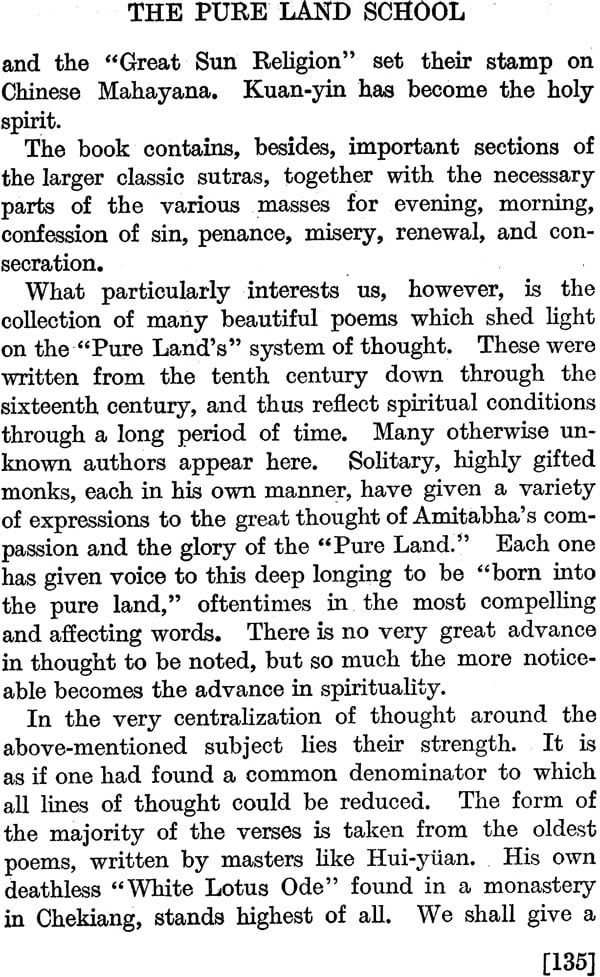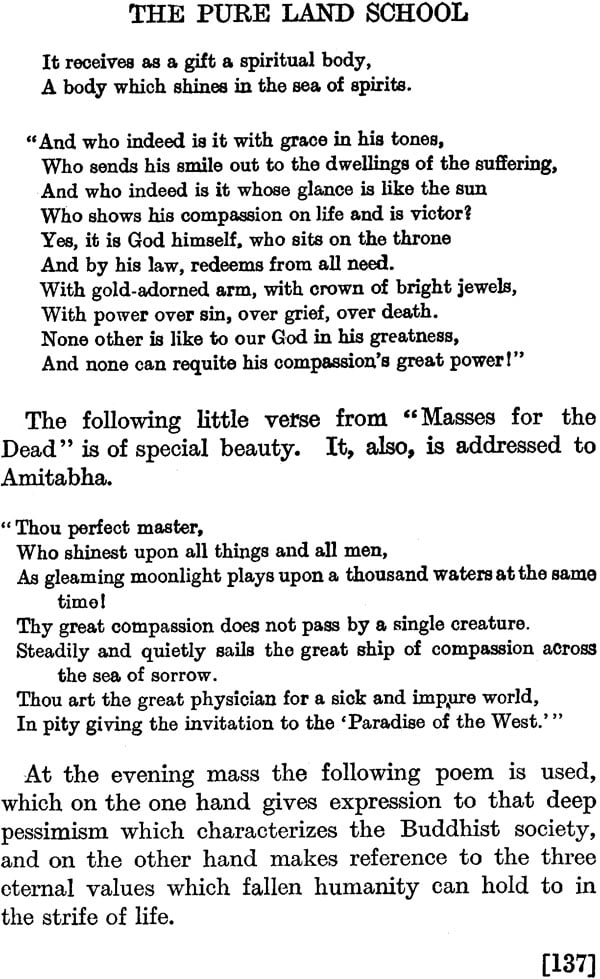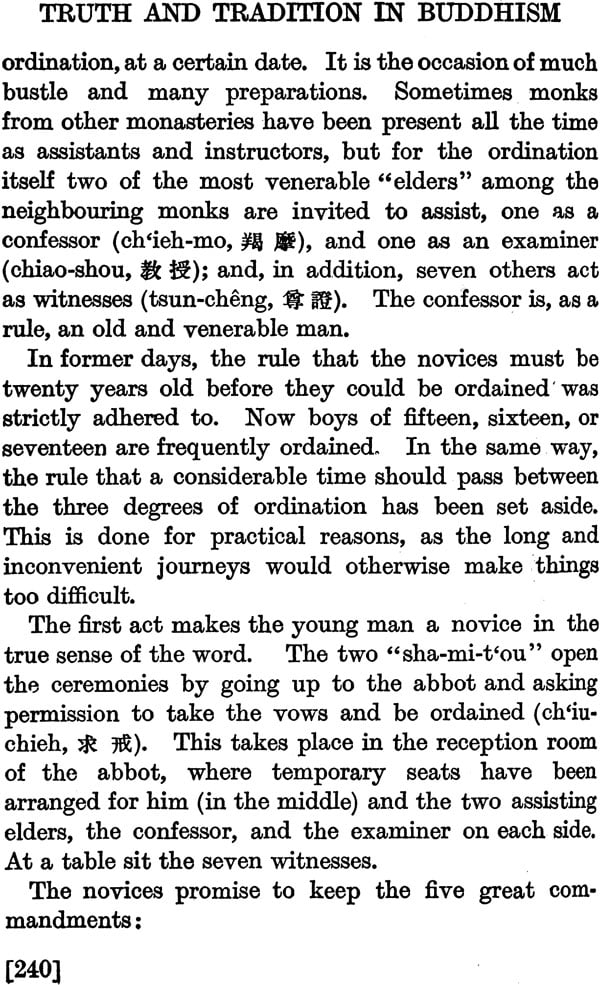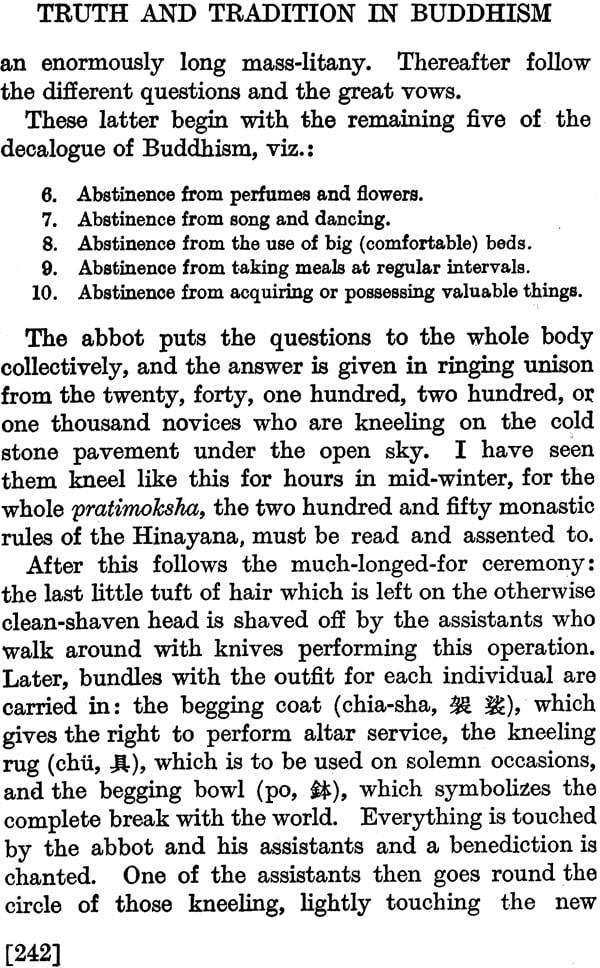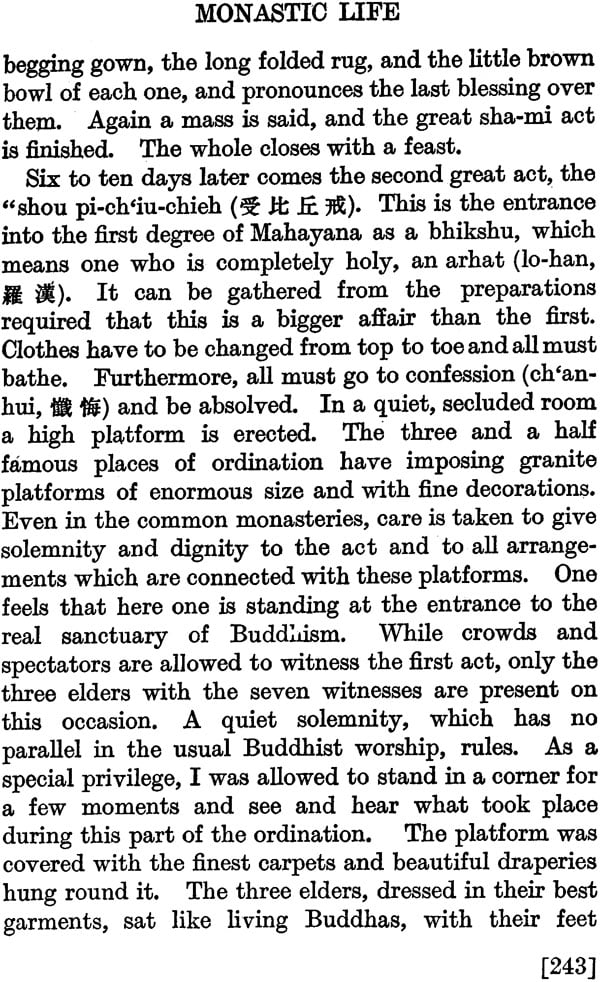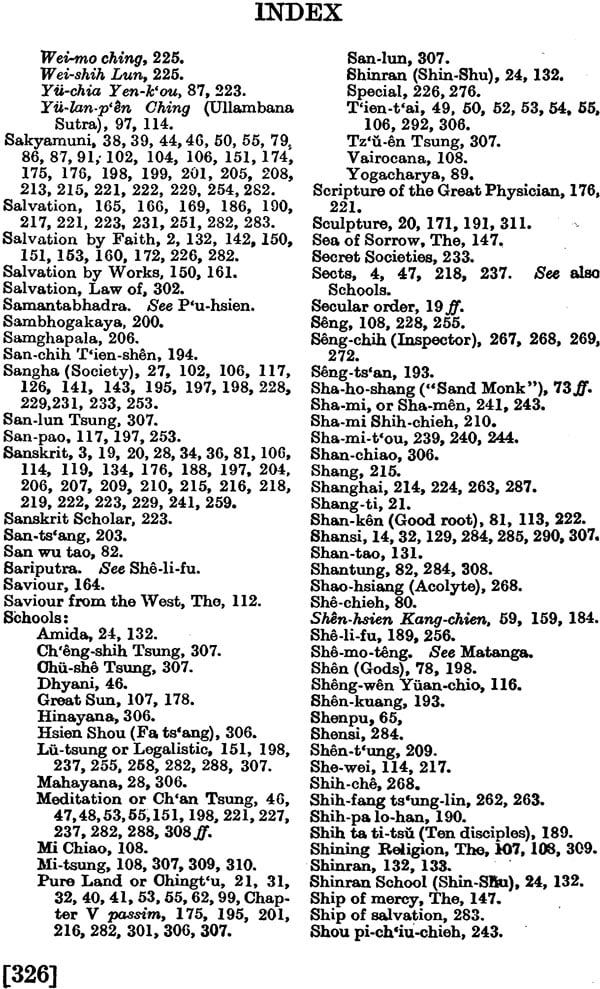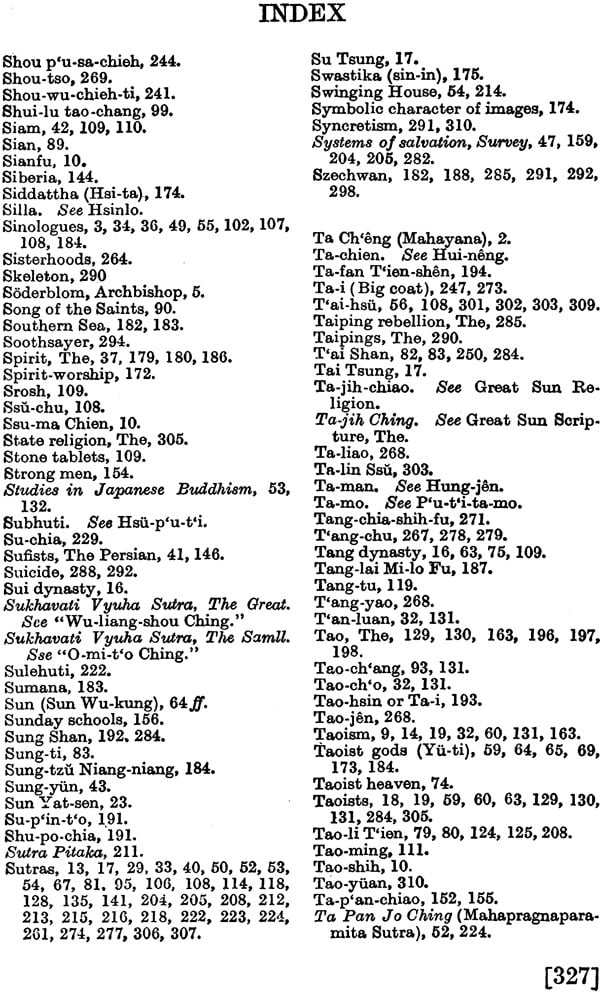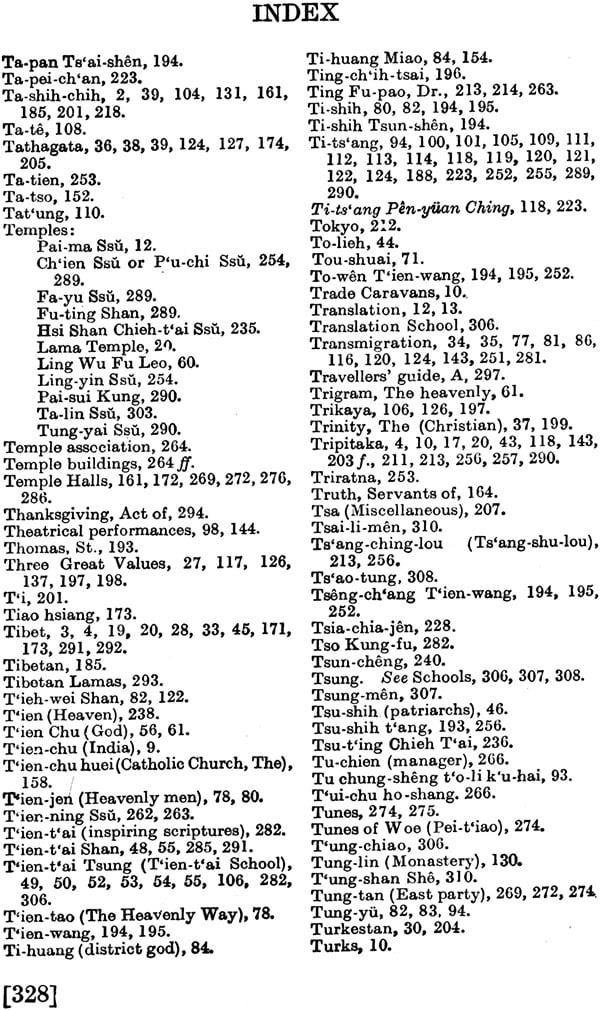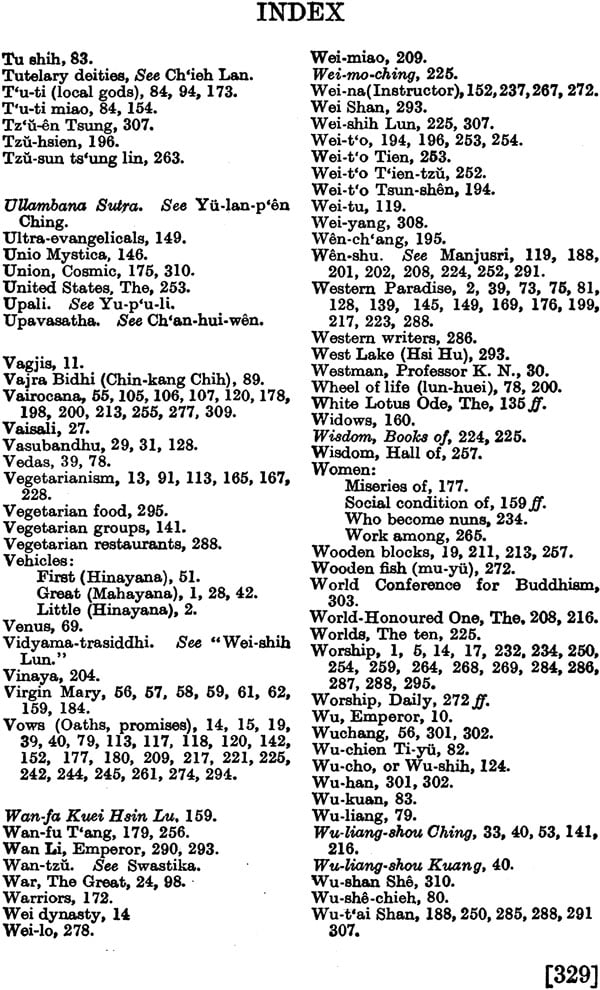
Truth and Tradition in Chinese Buddhism : A Study of Chinese Mahayana Buddhism/Karl Ludvig Reichelt.
Book Specification
| Item Code: | IDC918 |
| Author: | Kari Luding Reichelt |
| Publisher: | Munshiram Manoharlal Publishers Pvt. Ltd. |
| Language: | English |
| Edition: | 2000 |
| ISBN: | 8121510007 |
| Pages: | 346 |
| Cover: | Hardcover |
| Other Details | 6.0" x 7.6" |
| Weight | 640 gm |
Book Description
From the Jacket:
Karle Ludvig Reichelt, although a Christian missionary in China, has given an interpretation of Chinese Buddhism in a manner which is lucid, thoughtful and sympathetic. In the book such points are brought out which show as to why Buddhism is incomparable in its philosophy. Rich and illuminating interpretations are offered with regard to everyday matters, temples, names and phrases. A flash of light is thrown into the abyss of darkness when it is pointed as to why Buddhist spirituality, particularly that of pure land, is elevating when seen in the context of its prayer: Nan-mo O-mi-t'o Fu. The book also helps us in understanding the tangled web of Buddhist history by setting into relief the great ideas, both philosophical and religious, around the person of Amida who, as it were, concretises into himself all such human aspirations and hopes that are constitutive of existence in the world. Moreover, Amida truly represents the Buddhist notion of compassion when he showers his grace on those who pray unto him. Finally, we realise, upon reading this book, that the Chinese way of life can truly be appreciated and understood only in the light of Buddhism.
When the Jesuits first came into contact with Buddhism in Japan, in the sixteenth century they wrote of it as the work of the devil, who in it had cleverly imitated many things in the Roman ritual and was even deceiving men by adopting the Lutheran heresy of salvation by faith. Modern missionaries, on the other hand, have been inclined to account for apparently Christian elements in Buddhism by ascribing them to direct as well as indirect influences of Christianity itself. Others point to these similarities as evidence of tendencies not uncommonly found in the development of historic religions. In this book we have the work of neither the partisan adversary nor the partisan advocate, nor yet of a cold and scholarly but personally indifferent (and quite objective) student of the history of religions. The author has indeed supplemented his long and intimate personal observetions and studies of Buddhism in China by scholarly and exacting study of original Buddhist texts and the published works of other Western students in this field; but his chief claim on our gratitude is his illuminating appreciation of what is best and even of much which at first sight seems hopelessly superstitious and corrupt in this ancient and prolific faith.
I believe the Christian church in China is ready to welcome this sympathetic presentation of the truth and traditions in Chinese Buddhism. Doubtless others will also give this work a warm welcome, for it abounds in fascinating descriptions of what many take to be meaningless ceremonies and brilliant suggestions as to the results of possible or actual contacts between Christianity and Buddhism during the twelve hundred years since they first met on Chinese soil. But its supreme service will be to Christian missionaries from the West. I write as one of these. We need just this kind of sympathetic and thorough presentation of the main points in Chinese Mahayana Buddhism, both as a background for understanding the great "culture land" of China to which we have come, and also as an 'essential preparation in trying to meet the growing number of Chinese who feel the attraction and power of historic Buddhism in their own land. Such Chinese are to be found in the Christian church as well as outside. Intelligent sympathy and constructive thinking as well as unselfish devotion of life are necessary in any attempt to help build a spiritual home for the Chinese people of the present and the future.
In this book we find an impressive account of the long and rich history of Buddhism in China, and can hardly fail to see why thoughtful Buddhists, even those who are friendly to Christianity, while they concede the superiority of Christianity in practical good works, yet find Buddhism incomparable in its, philosophy.
Again, we find here illuminating interpretations of everyday matters, temples, idols, names and phrases the real significance of which is so often overlaid by the squalor and neglect which spring from pitiful poverty, and by grossly ignorant superstitions. A flood of light is thrown into the darkness by the comment that "when a man is in earnest about the prayer," "Nan-mo O-mi-t'o Fu," it means that his conscience is in control of his life.
In particular, this book helps us to find a way through the tangled confusion which besets Buddhism by setting in relief the great ideas and heroisms which centre around the vows of Amida and the bodhisattvas for the "salvation of all living beings."
True it is, as an honest reader must agree with this book in affirming that if one wishes to understand 'China he must see it in the light of Buddhism. I think we can say yet more. We are learning that self-knowledge in the individual grows chiefly through intercourse with his fellows, and that the principle involved in this fact applies also to nations. I believe we can hardly fail to see from this study, even if we have not seen it before, that deeper knowledge of its own surpassing inheritance will come to Christianity from such intercourse as this book records and invites between itself and Buddhism.
| Introduction | 1 | |
| I | The Introduction of Buddhism Into China and its History There | 9 |
| II | The Inner Development of Chinese Buddhism During The Early Centuries | 26 |
| III | The Journey to the West | 63 |
| IV | The Origin and Development of Masses for the Dead | 77 |
| V | The Purm Land School | 127 |
| VI | The Buddhist Pantheon in china | 171 |
| VII | Buddhist Literature in China | 203 |
| VIII | Monastic Life | 228 |
| IX | Pilgrimages | 284 |
| X | Present-Day Buddhism in China | 298 |
